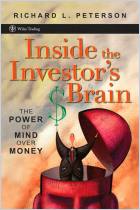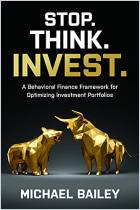
Behavioral Finance and Wealth Management
How to Build Optimal Portfolios for Private Clients
Read or listen offline
Amazon KindleRecommendation
This excellent, practical guide helps you apply behavioral finance information to your personal wealth management. Though Michael M. Pompian chiefly addresses a readership of professional investment advisers, any investor can benefit from learning more about the irrational factors that affect investment decisions. Readers can choose among many books about behavioral finance, cognitive biases and neuroeconomics. However, very few books can match this one’s hype-free, objective and accessible exposition of this subject. The author provides a brief history of behavioral finance, a thorough catalog of noteworthy investor biases, advice on how to deal with these biases, examples and the likely direction of future research in the field. getAbstract highly recommends his book for its straightforward language, which makes it widely accessible.
Summary
About the Author
Michael M. Pompian, CFA, CFP, is the director of the private-wealth practice at investment consulting firm Hammond Associates. He previously was a wealth management adviser with Merrill Lynch and PNC Private Bank.

















Comment on this summary